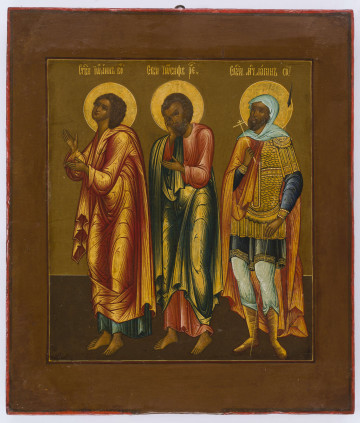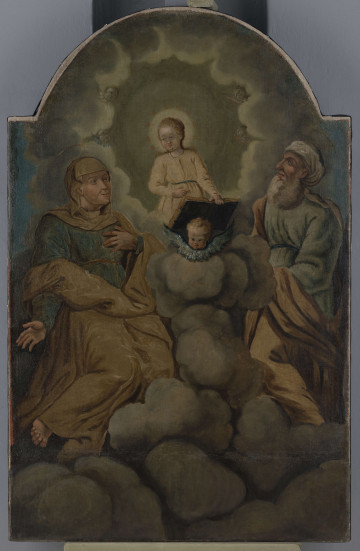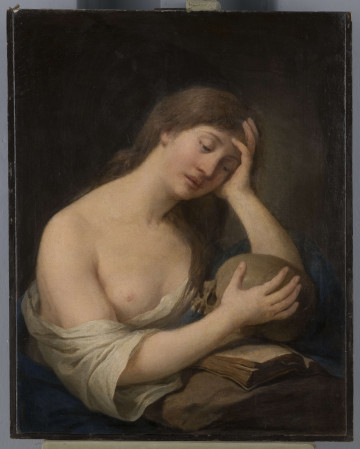
Ascension / Saints John, Joseph and Longinus
1801 — 1900
National Museum in Lublin
Part of the collection: Folk Art of the Lublin Region (17th–1st half of the 20th c.)
Christian tradition identifies St Mary Magdalene as the sinner who, according to John the Evangelist, washed Jesus' feet with her tears and wiped them with her hair. She was also present at Christ's crucifixion and death, and at his removal from the cross and burial. She was one of the three women surprised to see the empty tomb and was the first to tell the apostles about the resurrection. Later, like the disciples, she travelled zealously, preaching the gospel. She was called the apostle of the apostles, and her piety contributed to her being recognised as the patron saint of all those repenting of their sins.
The cult of the saint is still widespread today in the Orthodox and Roman Catholic Churches. In icons, she is a middle-aged woman dressed in a long robe and white shawl, who holds a cross and a vessel of oil in her hands. In Western iconography, she is often depicted as a half-naked penitent woman covered with long hair. Among her other attributes are an incense stick, a palm branch, a book, a skullcap, a hairpiece, and a mirror.
Saint Mary Magdalene, who acted as the leader of the female community, was compared to Saint Peter. This apostle was a trusted disciple of Christ and was the first to recognize him as the Messiah. He also witnessed special moments in the activity of his teacher, and despite denying him three times, he was entrusted with the role of overseeing the future Church. In iconography, he is most often represented as a balding, bearded, grey-haired old man, with a pair of golden keys in his hand, with a book or a scroll, with a staff or a sword, with a cock.
The figures of saints were an inspiration for many painters. Their images were created by, among others, Botticelli, Caravaggio, Georges de La Tour, Rembrandt, Titian, and they were also present in painting and folk culture. Saint Mary Magdalene, widely considered a penitent by the people, was a very important female figure - second only to the Virgin Mary. By the great masters she was depicted with a vessel containing precious oil, while in the folk version it was replaced by tears of repentance. Similarly, the apostle was depicted with tears streaming down his cheeks and a rooster, the symbol of his betrayal. In the folk Bible, these saints were often presented as a pair of sinners who received mercy. Perhaps that is why they have been paired together in this interesting painting.
Author / creator
Dimensions
cały obiekt: height: 46,5 cm, width: 60 cm
Object type
picture
Technique
oil technique
Material
plank, oil-based paint
Creation time / dating
Creation / finding place
Owner
The National Museum in Lublin
Identification number
Location / status

1801 — 1900
National Museum in Lublin

1801 — 1900
National Museum in Lublin

1780 — 1910
National Museum in Lublin
DISCOVER this TOPIC
National Museum in Lublin
DISCOVER this PATH
Educational path